| click
on icons for HOME and Session CONTENTS pages
|
||
|
|
||
|
|
||
|
3. Common Texts, Different Scriptures |
||
| SCRIPT | ||
NARRATOR
Both Jews and Christians venerate as sacred scripture texts that were written thousands of years ago in the Land of Israel. This links Judaism and Christianity in a way that connects no other two religious communities. However, this commonality can conceal important differences that have often caused conflict between Christians and Jews.
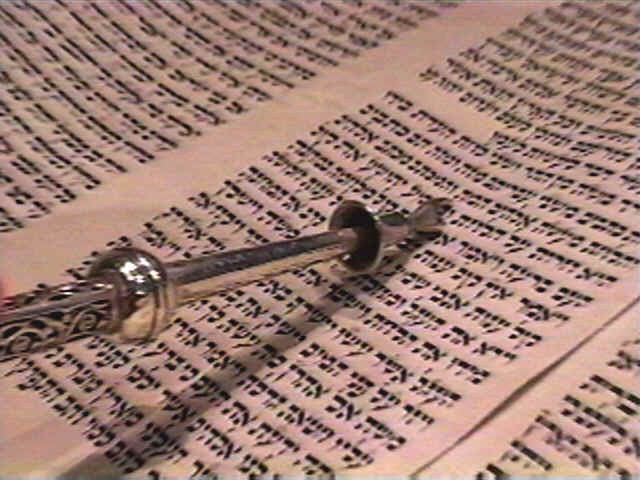 The Jewish and Christian
Bibles do
not contain the same books and they are not arranged in the same order. There is
a different "canon," a different listing of the biblical books in the
collections that Jews call Tanakh and Christians call the Old Testament.
The Jewish and Christian
Bibles do
not contain the same books and they are not arranged in the same order. There is
a different "canon," a different listing of the biblical books in the
collections that Jews call Tanakh and Christians call the Old Testament.
SR. BOYS
The major thing, seems to me, in terms of differences is not simply numbers of books, but the ordering. So that Tanakh ends with second book of Chronicles, it ends with a historical book. We end with a prophetic book. And there’s a real theological point to that.
PROF. LEVINE
It has been argued that the Bible of the church is more or less the same thing as the Bible of the synagogue - at least the church’s Bible: part one, the Old Testament. But I’m not quite so sure that it is.
NARRATOR
The Jewish scriptures are called the Tanakh, after the first letters of its three parts in the Jewish tradition.
PROF. LEVINE
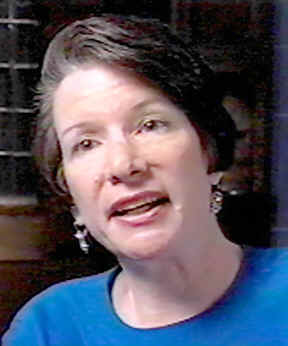 Not only do the two texts – the
Jewish Tanakh: Torah, Nevi’im and Ketuvim, and the
Old Testament of the church -- have different orders, with the church’s canon,
at least the Old Testament part of it, ending with the prophet Malachi,
predicting the return of Elijah, which gives you a very nice segue into John
Baptist in the Elijah role. The synagogue’s canon ends with Second Chronicles,
the Edict of King Cyrus of Persia saying, "okay, you Jews who were in
Babylon: go back home to Judea, let whoever among you is able go up. Let him
make aliyah [return up to Israel] and then go build a temple to God."
Not only do the two texts – the
Jewish Tanakh: Torah, Nevi’im and Ketuvim, and the
Old Testament of the church -- have different orders, with the church’s canon,
at least the Old Testament part of it, ending with the prophet Malachi,
predicting the return of Elijah, which gives you a very nice segue into John
Baptist in the Elijah role. The synagogue’s canon ends with Second Chronicles,
the Edict of King Cyrus of Persia saying, "okay, you Jews who were in
Babylon: go back home to Judea, let whoever among you is able go up. Let him
make aliyah [return up to Israel] and then go build a temple to God."
NARRATOR
The contrasting final books in the Jewish Tanakh and the Christian Old Testament show a significant Jewish and Christian difference in perspective. Christian readers of the Old Testament are directed to the coming of Jesus Christ in the Gospel of Matthew, the next book in the Christian Bible.
SCRIPTURE NARRATOR:
"Lo, I will send you, Elijah, the prophet / Before the day of the Lord comes, the great and terrible day / To turn the hearts of the fathers to their children / and the hearts of the children to their fathers / Lest I come and strike the land with doom" (Malachi 3:23-24).
NARRATOR
Jewish readers of the Tanakh conclude their Bible with the hopeful news of reestablishment and renewal in the land of Israel.
SCRIPTURE NARRATOR:
"Thus said King Cyrus of Persia: The Lord God of Heaven has given me all the kingdoms of the earth, and has charged me with building Him a House in Jerusalem, which is in Judah. Any one of you of all His people, the Lord his God be with him and let him go up" (2 Chronicles 36:23).
NARRATOR
The canons of the church and synagogue may differ, but Christians and Jews also use different traditions of interpretation to read the scriptures from ancient Israel.
FR. SMIGA
One of the common misperceptions among many Americans, and many people throughout the world actually, is that texts interpret themselves, that all you have to do, if you want to know what a text means, is just pick it up and read it. This is an overly simplistic understanding of what texts are.
NARRATOR
Scholars point out that written texts take on new meanings in the aftermath of major historical events. For example, the sermons of Dr. Martin Luther King, Jr. took on added depths of meaning after his assassination.
FR. SMIGA
The texts have not changed, the same words that were there all along, but the world has changed. And, when the world changes, texts change.
NARRATOR
For the Jewish friends of Jesus who came to believe that he had been raised from death, the world had indeed changed. They began to read Israel’s scriptures with new eyes.
FR. SMIGA
The classic way in which a Christian would approach the books that are shared with Judaism is to see within them a reflection of Christ. That’s because Christ is so central for Christians. So, we know that one of the things that the early church did intuitively and automatically was to go to the Hebrew scriptures, and try to find in there a reflection of Christ.
PROF. KIMELMAN
So it’s fascinating how you can have the same document in common, but the history of interpretation is so diverse, you’re not even sure they’re reading the same document. That itself is very consequential to the history of Christian and Jewish development.
SR. BOYS
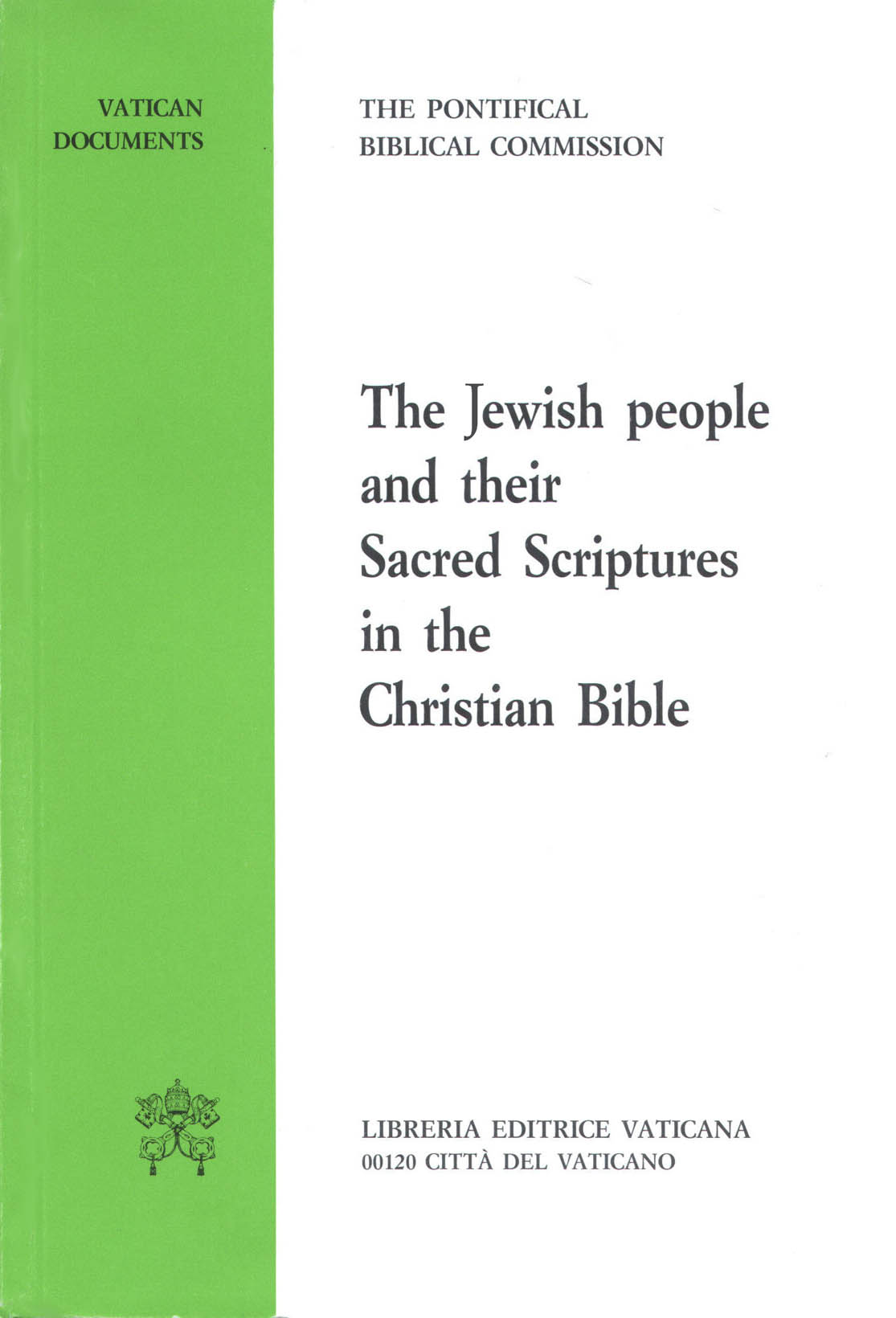 So that we tend, as Christians, to do
what a recent Pontifical Biblical Commission document calls a rereading. They
even use the term retrospective re-reading.
So that we tend, as Christians, to do
what a recent Pontifical Biblical Commission document calls a rereading. They
even use the term retrospective re-reading.
NARRATOR
In 2001, the Pontifical Biblical Commission, scholars appointed to give advice to the Vatican on biblical matters, pointed out that Christians read the Old Testament retrospectively. Their experience of Christ crucified and raised shapes how they read the scriptures from ancient Israel. Jews also read the Tanakh through the lens of their own religious life, but their reading is in the light of the traditions of the rabbis.
PROF. KIMELMAN
Most Jews perceive their Bible, sometimes straight, but frequently through the eyes of the oral Torah and the Rabbinic interpretation mediated between the reading of the Torah and their own understanding. So outside of scholars, the vast majority of people always got a mediated Torah.
PROF. LEE
 Essentially the oral law is like an
enormous layering of opinion upon opinion attempting to penetrate what the
meaning and the implications are of the written law. This became extremely
problematic in the post-Second Temple destruction era where the authority that
had been vested in the priesthood in the temple, now cleverly by the Rabbis was
transferred to the Torah.
Essentially the oral law is like an
enormous layering of opinion upon opinion attempting to penetrate what the
meaning and the implications are of the written law. This became extremely
problematic in the post-Second Temple destruction era where the authority that
had been vested in the priesthood in the temple, now cleverly by the Rabbis was
transferred to the Torah.
So vesting the Torah with the authority to bind together the people, it became necessary to keep on interpreting this law for ever-changing cultures, circumstances. And that’s a process that continues to today with responsa, raising questions about how to respond to incredibly contemporary issues.
NARRATOR
Since Jews and Christians approach the Bible from different perspectives and different traditions of interpretation, the very same passages can be read as having very different meanings.
Example 1: Jacob and Esau
SCRIPTURE NARRATOR:
Rebekah went to inquire of the Lord [why her children struggled together within her].
And the Lord said to her:
Two nations are in your womb,
And two peoples born of you shall be divided;
The one shall be stronger than the other,
The elder shall serve the younger.
Genesis 25:22-23
RABBI
ROSENTHAL
I’ll give you one simple illustration. Jacob and Esau, the twin sons of Isaac, are born. Esau [is] slightly older, a few minutes older than Jacob, as you recall in the book Genesis. And, it says there in the text, "The elder brother will serve the younger brother." Church fathers read into that a prediction of the fate of the Jewish people; namely, the elder brother, Judaism, will serve the younger brother, Christianity.
PROF. LEVINE
Both synagogue and church, relying upon the Book of Genesis in the canon of both religious traditions, appropriated the model of Jacob and Esau. Two twins struggling in Rebecca’s womb to figure out who was going to inherit the birthright and the blessing. When the synagogue told the story they talked about themselves as Jacob, later named Israel and looked at Esau in fact as Christian Rome.
Example 2: Psalm 23
SCRIPTURE NARRATOR
The Lord is my shepherd, I shall not want.
He makes me lie down in green pastures;
He leads me beside still waters;
He renews my life.
Psalm 23:1-2
SR. BOYS
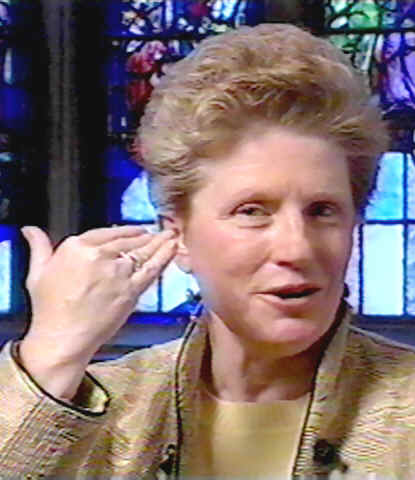 We layer our reading of say Psalm 23
with John 10, Jesus saying ‘I am the good Shepherd.’ So for instance, the
other day I was looking at a book of the Liturgy of the Hours, here’s Psalm 23
‘The Lord is my Shepherd,’ but right under the headline, Psalm 23 in this
liturgy book is "I am the good Shepherd. I know my sheep and mine know
me." So that the Christian reader can rather easily layer on images of
Jesus as Shepherd to ‘the Lord is my Shepherd’ in Psalm 23. Obviously that
would be very different in the Jewish tradition.
We layer our reading of say Psalm 23
with John 10, Jesus saying ‘I am the good Shepherd.’ So for instance, the
other day I was looking at a book of the Liturgy of the Hours, here’s Psalm 23
‘The Lord is my Shepherd,’ but right under the headline, Psalm 23 in this
liturgy book is "I am the good Shepherd. I know my sheep and mine know
me." So that the Christian reader can rather easily layer on images of
Jesus as Shepherd to ‘the Lord is my Shepherd’ in Psalm 23. Obviously that
would be very different in the Jewish tradition.
Example 3: The Suffering Servant of the Lord
SCRIPTURE NARRATOR:
The Lord said to me,
"You are my servant, Israel, in whom I will be glorified. …"
"It is too light a thing that you should be my servant
to raise up the tribes of Jacob and to restore the survivors of Israel:
I will give you as light to the nations,
that my salvation may reach to the end of the earth."
Isaiah 49: 3,5,6b
FR. SMIGA
A text that I like to look at is a text from the prophet Isaiah, chapter 49.
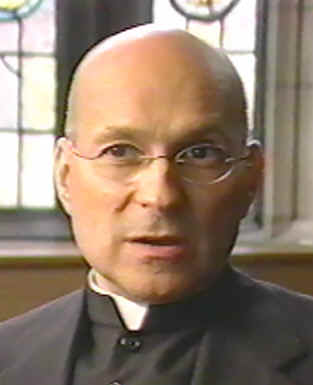 And it’s very interesting because
at the beginning of that chapter, it starts out saying, "Here is my
servant, Israel, " clearly identifying the servant of the Lord as Israel,
as the whole people, and what God is going to call Israel to do. No more than a
few sentences later, the text changes and talks about the servant of the Lord as
an individual. It says, "My servant will ransom Israel, will liberate my
people." Now in our varying interpretations of this same passage, the
Jewish tradition has centered upon seeing the servant of the Lord as Israel.
And it’s very interesting because
at the beginning of that chapter, it starts out saying, "Here is my
servant, Israel, " clearly identifying the servant of the Lord as Israel,
as the whole people, and what God is going to call Israel to do. No more than a
few sentences later, the text changes and talks about the servant of the Lord as
an individual. It says, "My servant will ransom Israel, will liberate my
people." Now in our varying interpretations of this same passage, the
Jewish tradition has centered upon seeing the servant of the Lord as Israel.
The Christian community, on the other hand, from the very beginning has centered on the individual interpretation of the servant of the Lord. And in that interpretation has identified it with Jesus. Jesus is the servant of the Lord, the one who through his cross and resurrection has suffered and is now the Risen Lord. And so, in the same text from the scriptures, you have different options being exercised by different communities drawing forth a meaning that is usable for their respective communities.
NARRATOR
If people think that there can be only one correct meaning of a biblical text, then the different Jewish and Christian approaches to the Bible would lead to nothing but conflict between the two groups. But what if each community felt that their respective interpretations have their own distinctive value?
The 2001 Pontifical Biblical Commission study encouraged such mutual respect. The Commission instructed that Jewish and Christian readings were "analogous" and "parallel" to one another and "are bound up with the vision of their respective faiths."
PROF. LEVINE
Part of the problem we have now is that we’re wrestling over the same text. We’re each claiming that we have the correct interpretation. In this sense the text both unites us -- it keeps us together as opposed to say Hinduism or Buddhism or even Islam. But at that very same time we are like children of the same father wrestling over who gets to inherit that father’s property. The Old Testament / Tanakh both keeps the church and synagogue together and at the same time drives a wedge between them.
NARRATOR
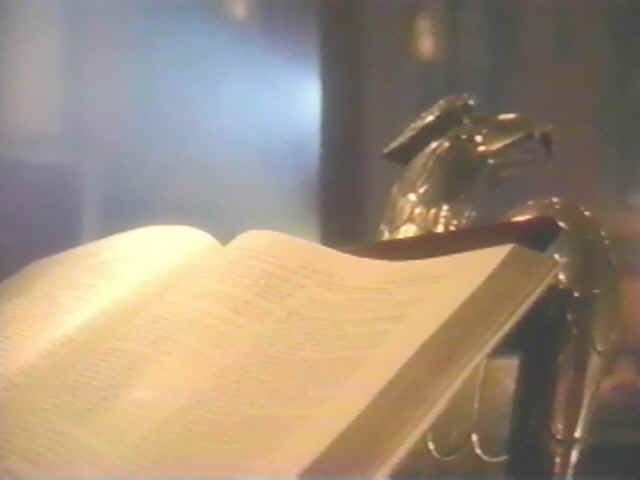 With their different approaches to
the scriptural texts, one could ask: "Are Christians and Jews more united
or divided by the fact that they hold some biblical books in common?"
With their different approaches to
the scriptural texts, one could ask: "Are Christians and Jews more united
or divided by the fact that they hold some biblical books in common?"
PROF. LEE
Well I’d start with the assumption that if Jews and Christians were to engage in serious study of scripture and subsequently really had access to the interpretive layers upon scripture, there could be a basis for conversation even in the presence of differences because those differences are very important in revealing some core understandings and core meanings.
FR. SMIGA
I think there are two things that are important. The first is that we do approach the Hebrew scriptures because we’re Christian, and therefore we look in those scriptures for connections to our own faith. There is a great deal of emphasis, and rightly so, within Christianity of emphasizing the person of Jesus. But, sometimes, what’s missed is how much we do, in fact, share in common with Judaism. Most of what we believe about God is simply Jewish, and it’s all testified to in the Hebrew scriptures. The idea of God as creator, the idea of a God who intervenes into history, a God that cares for us, a God to whom we can pray and expect a response -- these are all part of the Jewish tradition and part of our patrimony from Judaism.
RABBI LEHMANN
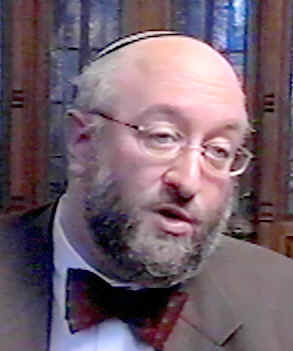 [Both
communities make] the attempt to create communities of
worship, the attempt to create communities of learning around texts that we
share – and some that we don’t share, the attempt to transform the world
into a place that is appropriately referred to as the Kingdom of God. I think
in areas of worship, I think in areas of study, I think in areas of what it
means to create intense spiritual communities that we share common purposes,
that we have a lot to learn from one another, and there’s still a great deal
of experimentation that needs to take place in ways that those common purposes
can overlap. And can enhance each community.
[Both
communities make] the attempt to create communities of
worship, the attempt to create communities of learning around texts that we
share – and some that we don’t share, the attempt to transform the world
into a place that is appropriately referred to as the Kingdom of God. I think
in areas of worship, I think in areas of study, I think in areas of what it
means to create intense spiritual communities that we share common purposes,
that we have a lot to learn from one another, and there’s still a great deal
of experimentation that needs to take place in ways that those common purposes
can overlap. And can enhance each community.
NARRATOR
So it would seem that Judaism and Christianity are united and also divided by their common scriptural heritage. In the past their differences led to the estrangement of Christians and Jews. Today, however, Jews and Christians live in an environment of mutual respect and interreligious dialogue. As the Second Vatican Council declared, "Since Christians and Jews have such a common spiritual heritage, this sacred council wishes to encourage and further mutual understanding and appreciation. This can be achieved, especially, by way of biblical … enquiry and through friendly discussions." Today, biblical differences can contribute to mutual enrichment and deeper faith.